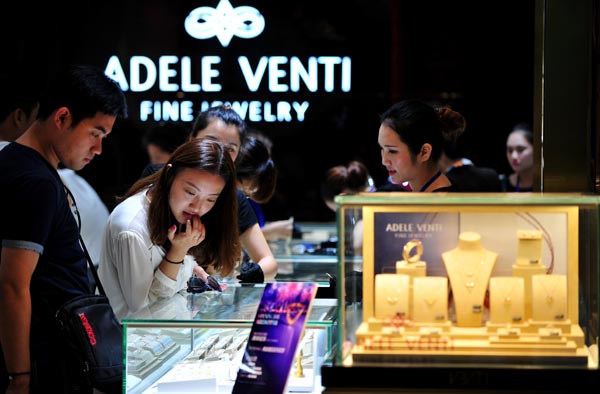
Young Chinese are developing an appetite for affordable foreign brands even as fine jewelry reigns supreme
Kasey Zhang, a Beijing-based young professional in her late twenties, believes that women always need a piece of jewelry in their lives. It is an important element of their daily routines, helping them to dress up a working outfit or adding a special touch to a party ensemble.
However, she does not believe that diamonds are a girl's best friend. She personally prefers crystal jewelry over fine jewelry because of its affordability and delicate designs.
"I like buying crystal jewelry pieces because of their beautiful designs and because they are much cheaper than other jewelry creations," explained Zhang. "So if I lose them, I will be sad but it is not a tragedy."
Traditionally, the purchase of jewelry in China has been driven by conservative reasons related to its perception as an economic asset.
For this reason, the Chinese jewelry market continues to be dominated by fine jewelry, particularly by pieces with precious metals and stones.
Total retail sales value of the jewelry market in China surpassed 500 billion yuan ($77 billion) in 2015, of which retail sales value of gold jewelry accounted for around 75 percent, according to research and consulting group Frost & Sullivan.
"Chinese consumers consider fine jewelry an investment tool to maintain their wealth under the more challenging conditions of economic downturn," explained Olaya Huo, research analyst at Euromonitor International.
However, young Chinese like Zhang are quickly developing an appetite for affordable fashion jewelry from foreign brands because of their innovative designs and good reputation.
As the income level of the younger consumers is comparatively lower than that of the elder generation, affordable jewelry products with fashionable and stylish designs are gaining more favor among the younger generation, explained Neil Wang, global partner and greater China president of Frost and Sullivan. "As a result, affordable jewelry products are becoming more and more popular in China."
Austrian crystal brand Swarovski entered the Chinese market in 1995 using a franchise model to distribute its products in the country.
Nowadays, almost half of its stores are directly managed by Swarovski, with the company now gradually trying to take over some of the franchises to strengthen its control over distribution.
Swarovski, which defines itself as a premium, yet affordable name for everyday use, expects to open around 30 more new stores this year to reach 300 commercial spaces across China.
The crystal jewelry group plans to be present in 90 different cities across the country this year, covering 10 more locations than in 2015.
"Our main focus is to keep expanding into third- and fourth-tier cities because the retail landscape is becoming more mature in these locations," explained Francis Belin, Senior Vice-president of Asia Pacific at Swarovski. "We see more opportunities to open stores there."
Swarovski believes that increasing distribution and accessibility of the brand are crucial elements to keep its expansion.
For this reason, the company is drafting an online strategy to drive sales up.
Last year, the company was one of the first foreign jewelry brands to open a storefront on Alibaba Group Holding's online marketplace Tmall.com.


















































